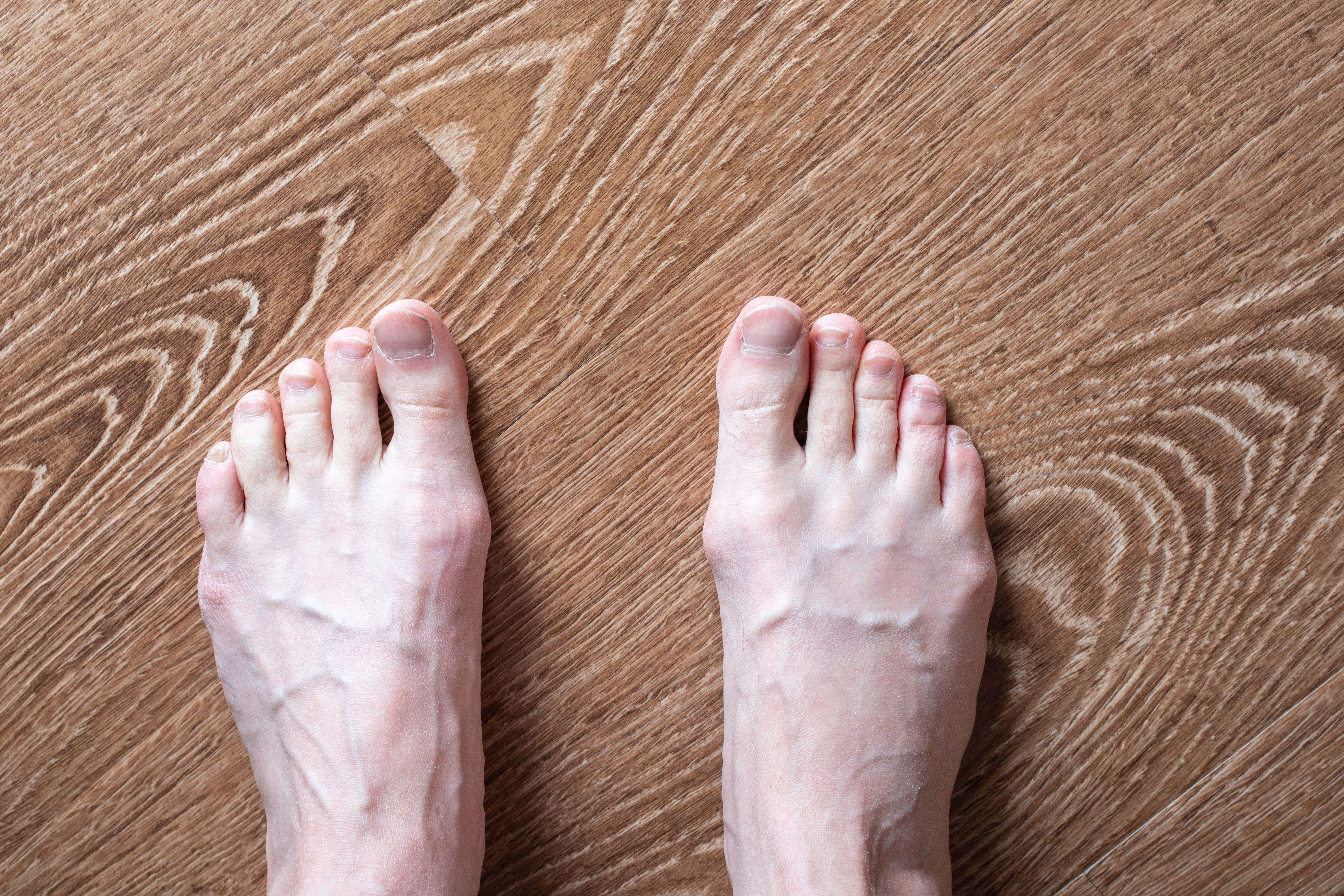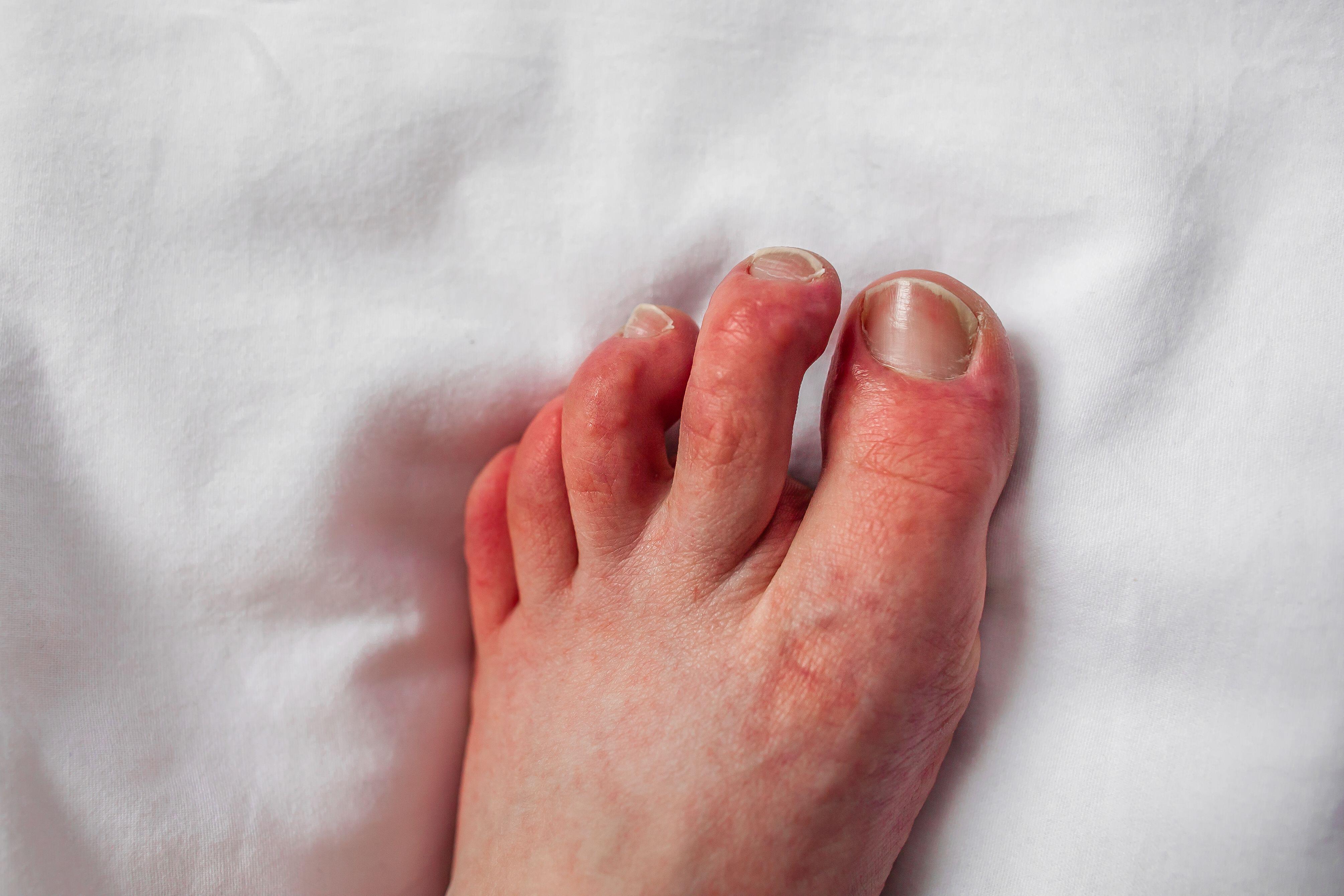Your ft is usually a window into your general well being. And so they shouldn’t be ignored.
From coronary heart illness to strokes, your ft can present indicators of sickness.
Podiatrists can spot all kinds of often-serious well being issues simply from your ft.
Emma McConnachie, a spokesperson for the Royal Faculty of Podiatry, stresses: “Podiatrists go a lot additional than coping with ingrown toenails, corns and verrucae.
“In addition to finishing up minor surgical procedure, working to forestall amputations and issuing treatment corresponding to antibiotics, they’ll detect a variety of well being issues through indicators in your ft. We delve into a number of the issues your ft may be making an attempt to inform you.”
Right here, McConnachie outlines just a few of the well being issues that may present up in your ft…
1. Circulation issues
Should you’ve seen a current change in your ft and ankles corresponding to pronounced swelling or a mottled colouring, this might be an indication of circulatory points, explains McConnachie. “Modifications could happen in just one limb or in each. Should you discover any modifications within the measurement or color of your ft and ankles, then contact your GP or podiatrist.”
She says ft will usually be cooler over the winter months because the temperature drops, so ensuring your ft and legs are insulated with heat clothes will assist minimise this. “There are numerous circulatory situations which may additionally trigger a change to the temperature of your decrease limbs, so when you discover a sudden and extended change within the temperature of 1 or each of your ft and legs, converse to your podiatrist or GP to get the problem checked out,” she advises.
2. Coronary heart illness, diabetes or neurological situations
Modifications within the sensation in your ft, corresponding to tingling or numbness, is usually a signal of many various well being points. McConnachie says circulation issues attributable to situations corresponding to coronary heart illness or diabetes, or by heavy smoking or alcohol consumption may cause nerve endings to cease working correctly.

“This leaves you unable to inform when you’re injured or have a wound, enormously growing your threat of an infection and amputation,” says McConnachie, who explains that neurological situations and trauma may also have an effect on the best way nerves work.“Attempt to be aware the place in your ft you’re getting the modifications, and if something makes it worse or higher,” she suggests. “How would you describe the sensation and the way usually is it occurring? This might help your podiatrist assess your points and work in the direction of a prognosis.”
3. Kidney or liver issues, hormonal modifications or pores and skin points
Itchy ft is usually a signal you could have a fungal an infection or that you just haven’t been moisturising your ft sufficient, however it might additionally point out wider well being issues corresponding to kidney or liver points, or hormonal modifications, says McConnachie.
“Sure prescription medicines have additionally been reported to trigger itching within the ft and legs as a side-effect, and small fluid-filled lesions related to dermatological situations might also be the trigger.”

4. Melanoma
Many discoloured nails are attributable to trauma releasing a small quantity of blood below the nail, or a fungal an infection which may trigger a brownish-orange discolouration and infrequently thickening and crumbling. Nonetheless, McConnachie says melanoma below the nail accounts for as much as 3.5% of all melanomas worldwide, with as much as 90% of those seen within the thumb or huge toe.
“Melanomas can have an effect on any pores and skin tone and can usually seem as a darker discolouration below the nail which doesn’t develop out with the nail,” she explains. “With the typical toenail taking a minimum of six months to develop out, this will make it tougher to know if it’s shifting, because the mark could seem in your nail for a while.”
Anybody involved a couple of discoloured nail ought to converse to a podiatrist, and McConnachie says taking a close-up picture of the toenail for reference can be a good suggestion that will help you inform if it’s rising out.
5. Dehydration, blood stress, cardiovascular or thyroid issues
The pores and skin is the most important organ within the physique and McConnachie stresses flaking or cracked pores and skin on the ft could also be an indication of varied well being issues: “Dehydration may cause the pores and skin to grow to be much less supple, however underlying medical situations corresponding to points with blood stress, cardiovascular situations and thyroid issues can all affect your pores and skin in your ft and legs,” she says.
6. Autoimmune situations
Auto-immune situations corresponding to psoriasis can impression the ft and nails, which can have a unique look than you’d count on in consequence. Many instances of flaking or cracked pores and skin can be attributable to athlete’s foot or an absence of moisturising cream, however McConnachie advises: “Should you’ve been utilizing moisturiser every day for a few weeks with no enchancment, or are experiencing itching or lesions, then converse to your podiatrist to get assessed.”
7. Neurological situations together with strokes
Sudden modifications in foot form may also point out a wider well being drawback, and McConnachie says: “These would sometimes be the place the foot turns into extra ‘clawed’ after a traumatic or neurological subject, for instance a stroke, which may trigger the foot to vary form out of the blue.”
Situations which have brought on a lack of sensation within the ft, corresponding to diabetes, can result in sudden modifications in foot form which can be a situation referred to as Charcot foot. “If in case you have any sudden modifications within the form of your foot, particularly the place you could have underlying well being situations or issues with sensation or circulation, converse to your podiatrist promptly for evaluation,” advises McConnachie.
8. Pernicious anaemia or kind 2 diabetes
Recurring fungal infections of the pores and skin on the foot regardless of therapy, recurring bacterial infections and typically even ingrowing toenail issues which haven’t resolved with therapy could also be an indication of one thing extra widespread, warns McConnachie.
“All of those could also be an indication there’s an underlying subject within the physique,” she says. “Your podiatrist could talk about additional testing along with your GP the place they’ve a priority about your normal well being. Situations corresponding to kind 2 diabetes and pernicious anaemia the place there will not be different apparent signs can someday current this manner.”
